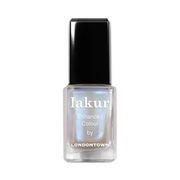Olaplex Guide: Uses, Effects & Results
If you haven’t heard of Olaplex yet, you might be one of the last people on earth to do so. The success of this hair treatment has created a wave of similar products that claim to do the same thing. The truth is, there’s nothing quite like Olaplex. One bottle of Olaplex No 3 Hair Perfector is sold worldwide every five seconds.
That’s how popular this product is - but how does it work? Will Olaplex fix split ends, or does it just make them feel less rough? Here’s our guide to what makes Olaplex No 3 such a cult classic and who should add it to their haircare routine.
What is Olaplex?
Olaplex is a brand of hair care developed and made in California, USA. When people say Olaplex, they usually refer specifically to Olaplex Hair Perfector, number 3 in the Olaplex line-up. This haircare brand features a range of seven products, with some products having special variations for different hair types.
Two of these product formulas are professional only - meaning you’ll only be able to treat your hair with them in-salon - while five are designed for at-home use.
Olaplex Number 3 is easily the most popular at-home hair product, followed by the matching Shampoo and Conditioner.
But what makes Olaplex such a best-selling product?
What does Olaplex do to your hair?
Olaplex repairs your hair with a patented ingredient called Bis-Aminopropyl Diglycol Dimaleate. This ingredient is exclusive to Olaplex and is exactly what makes this brand’s products so special. Bis-Aminopropyl Diglycol Dimaleate repairs hair at a microscopic level by fixing broken disulphide bonds.
These bonds hold keratin, the protein that makes up your hair together. By repairing broken disulphide bonds, Olaplex fixes split ends for smoother, healthier hair.
 Olaplex Nº.8 Bond Intense Moisture Mask
Olaplex Nº.8 Bond Intense Moisture Mask
Hair needs moisture, too - this mask from Olaplex smooths and conditions your hair, reducing split ends and adding shine to your hair.
Is it worth buying Olaplex?
Whether it’s worth getting Olaplex depends on your hair type and what you’re doing to your hair. Olaplex is designed to repair hair damaged by:
- Bleach
- Colour
- Heat
Olaplex is ideal for anyone who bleaches and lightens hair. Bleaching hair damages sulfide bonds, making hair feel rough and dry (in the best cases) and in the worst cases, can literally melt hair.
If you’re styling your hair enough to cause heat damage, Olaplex is a great option. However, if your hair feels relatively ‘normal’ with minimal damage from bleach or heat, Olaplex might not be the best choice for you.
Can Olaplex regrow hair?
No, Olaplex can’t regrow hair. Olaplex works by repairing damage to existing hair, but it isn’t able to encourage new hair growth.
How to Use Olaplex
Olaplex Number 3 is best used once a week for colour treated, bleached, or heat-damaged hair. The best way to use this is to apply a generous amount of this treatment to damp hair. Then, relax for twenty minutes to let Olaplex Hair Perfector do its job.
Can I Use Olaplex Overnight?
Officially, Olaplex doesn’t support using the Hair Perfector overnight. However, many Olaplex fans have found that they get the best results when they leave this hair treatment on overnight. While the jury is out on why exactly this happens, it could be worth experimenting if leaving Olaplex No 3 on overnight works for you.
Products Mentioned:


 Olaplex Nº.0 Intensive Bond Building Treatment
Olaplex Nº.0 Intensive Bond Building Treatment Olaplex Nº.3 Hair Perfector
Olaplex Nº.3 Hair Perfector Olaplex Nº.7 Bonding Oil
Olaplex Nº.7 Bonding Oil
